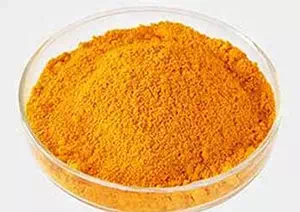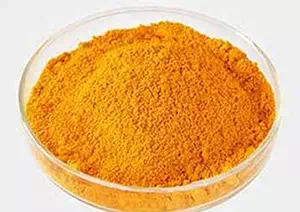All Categories


Iron Chloride Hexahydrate CAS 10025-77-1, Iron Chloride Hexahydrate, CAS 10025-77-1
Molecular formula: FeCl₃·6H₂O or Cl₃FeH₁₂O₆,Molecular weight: 270.3 g/mol,Appearance: Yellowish-brown crystals or blocky solids, odorless, with astringent taste.
CAS : 10025-77-1
Formula : Cl3FeH12O6
Mol. wt. : 270.3
EINECS : 600-047-2
| CAS | 10025-77-1 |
| Molecular formula | Cl3FeH12O6 |
| Molecular weight | 270.3 |
| EIENCS | 600-047-2 |
| Form | purified lumps |
| Melting point | 37 °C(lit.) |
| boling point | 280-285 °C(lit.) |
| Density | 1,82 g/cm3 |
| Solubility | 920g/l |
| PKA | / |
| Color | yellow-brown lumps |
| Storage temp |
Chemical labeling
Molecular formula: FeCl₃·6H₂O or Cl₃FeH₁₂O₆
Molecular weight: 270.3 g/mol
Appearance: Yellowish-brown crystals or blocky solids, odorless, with astringent taste.
Melting point: 37℃ (Deliquesces into a reddish-brown liquid).
Boiling point: 280-285℃.
Density: 1.82 g/cm³ (20℃).
Solubility and stability
Solubility
It is highly soluble in water (920 g/L, 20℃), and the aqueous solution is strongly acidic (pH 1.8, 10g/L).
Soluble in ethanol, ether, acetone and glycerol; Insoluble in benzene.
Stability
It has strong hygroscopicity and is prone to deliquescence in the air.
Contact with strong oxidants and alkali metals (such as sodium and potassium) may form explosive mixtures.
It may be reduced to ferrous compounds when exposed to light or heat.
Water treatment
Flocculant: Highly efficient in removing suspended solids and colloids, suitable for pH 6.0-11.0 (optimal 6.0-8.4), dosage 5-100 mg/L, fast sedimentation speed and not affected by temperature.
Pollutant degradation: Strong oxidizing properties can decompose organic pollutants (such as phenol and cyanide).
Industrial manufacturing
Etching agent: It is used for the corrosion processing of printed circuit boards and metal signs (such as copper and stainless steel).
Catalyst: Promotes organic synthesis reactions (such as olefin polymerization and esterification reactions).
Dyes and pigments: Mordants and oxidants, used in printing and dyeing, and the production of fluorescent dyes.
Other fields
Nutritional fortifier: Added to infant formula and weaned milk products (it needs to be converted into whey iron to reduce acidity).
Analytical reagents: For the determination of arsenic, lithium, selenium, serum cholesterol, etc.
New energy materials: Iron source for lithium iron phosphate, the cathode material of lithium-ion batteries.
Toxicity and Hazards
Acute toxicity: Oral LD₅₀ in rats = 316 mg/kg (moderate toxicity); The lethal dose for adults is approximately 6 grams.
Stimulating:
Skin/eye contact: May cause burns and conjunctivitis.
Inhalation: Causes sore throat, abdominal pain and nausea.
Environmental risk: Toxic to aquatic organisms (Acute Hazard Category 2).
Protection and Storage
Operation protection: Anti-corrosion gloves, goggles, gas masks and protective clothing must be worn.
Storage conditions:
Sealed and light-proof, in a low-temperature and dry environment of 2-8 ℃.
Keep away from oxidizing agents, alkali metals and heat sources 🔥.
Fire extinguishing agents: water, carbon dioxide, dry powder, foam.
Emergency response
Contact handling:
Skin: Rinse with clean water for 20 minutes and wash with soapy water.
Eyes: Rinse with normal saline for 10 to 15 minutes and seek medical attention.
Ingestion by mistake: Rinse mouth with clean water and drink milk.
* Prompt reply and 24 hours online, professional team to provide best price and high quality product.
* Sample testing support.
* Every batch of products will be tested to ensureits quality.
*The packing also can be according the customers` requirment.
*Any inquiries will be replied within 24 hours.
*we provide Commerical Invoice, Packing List, Bill of loading, COA , Health certificate and Origin certificate. If your markets have any special requirements, let us know.